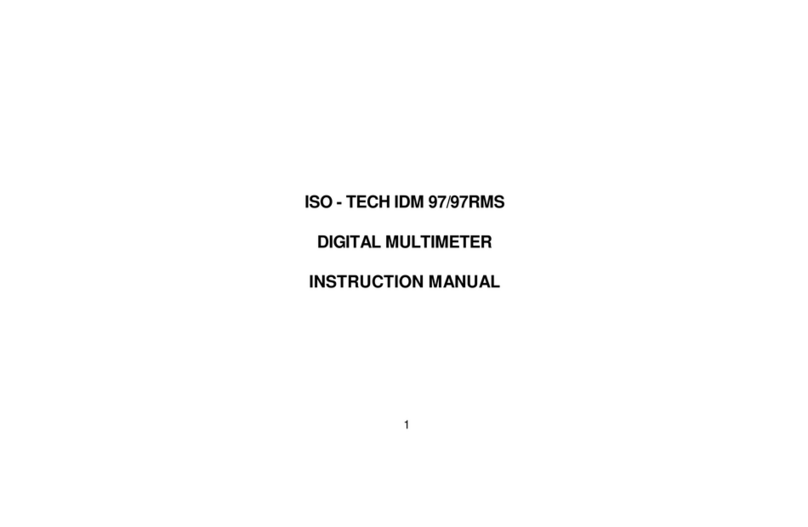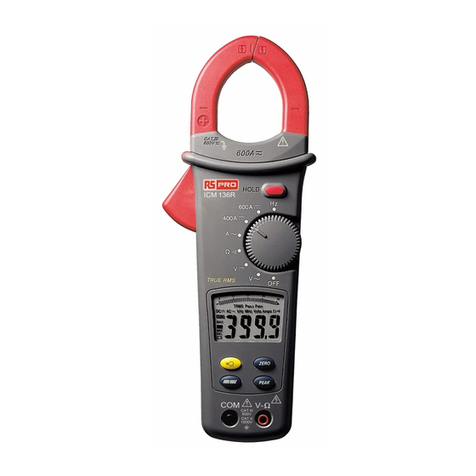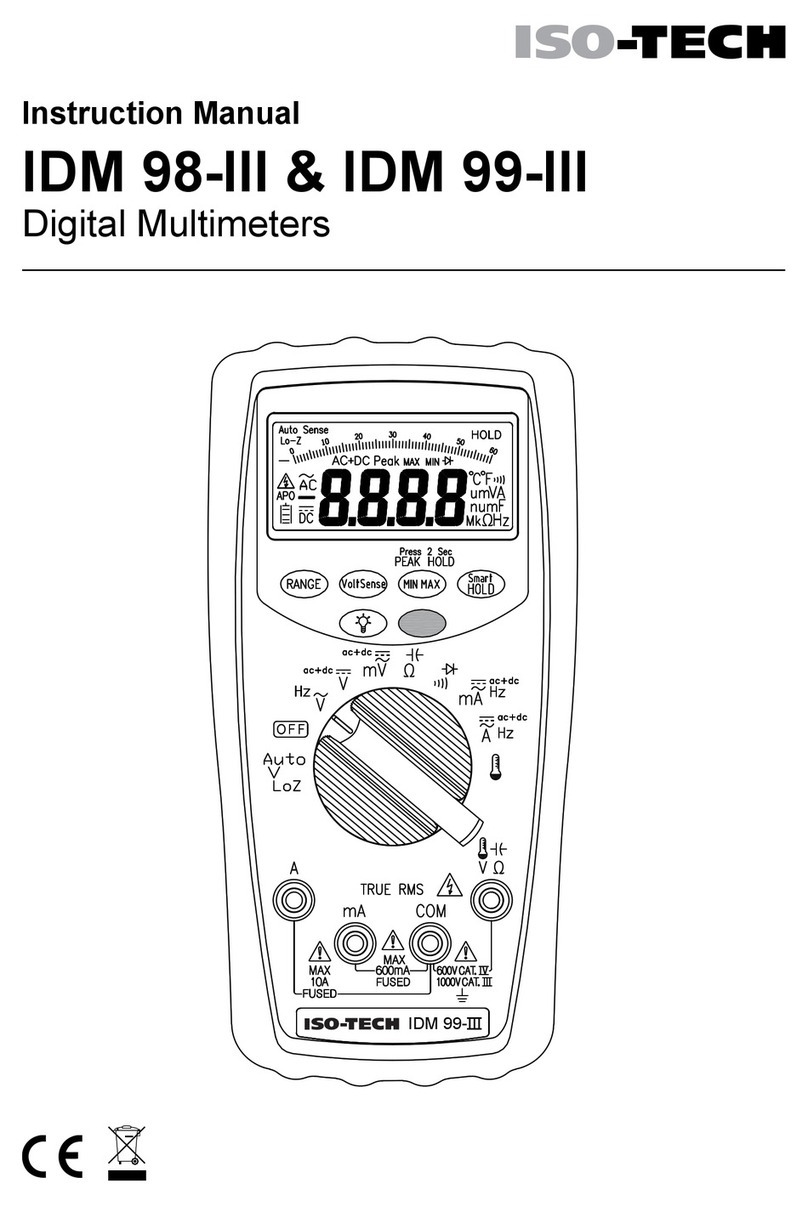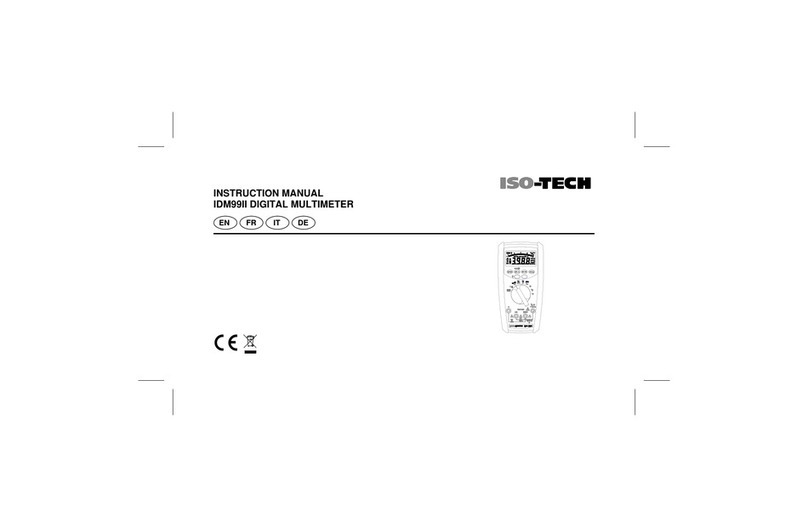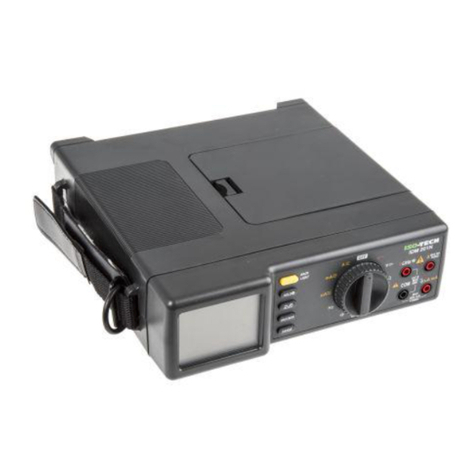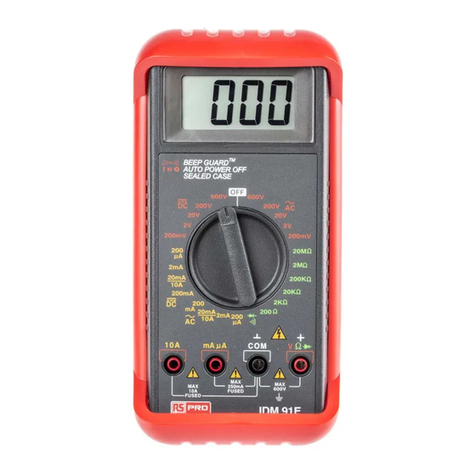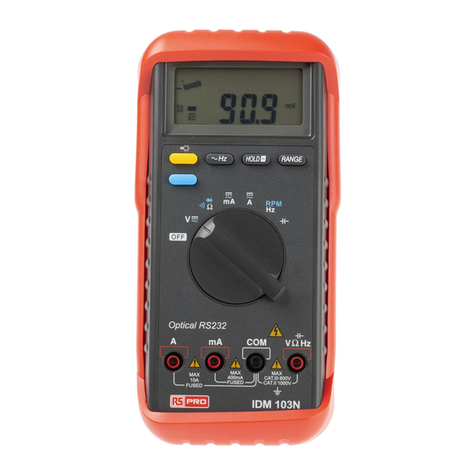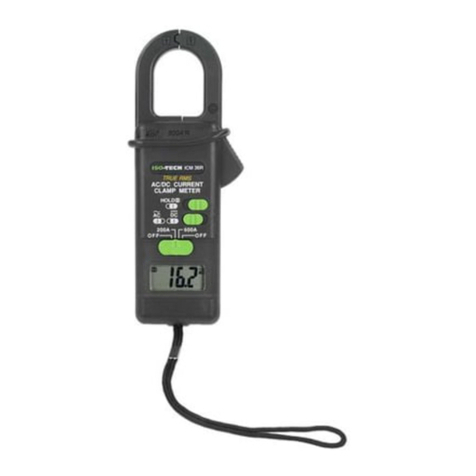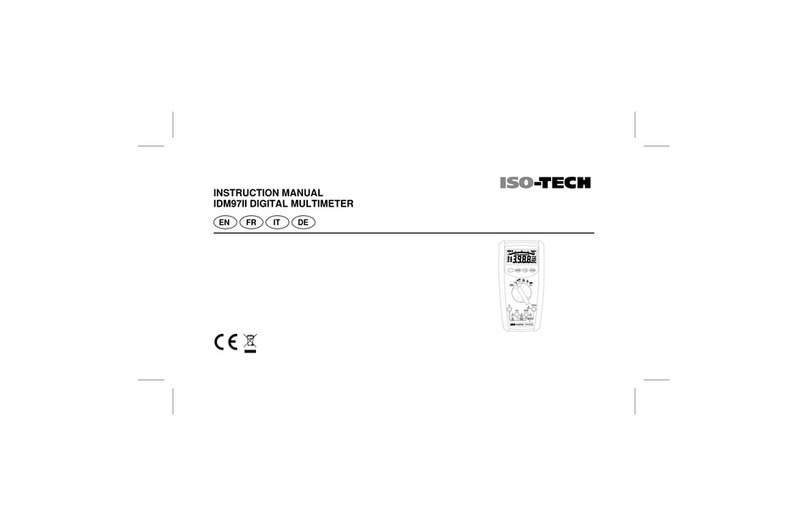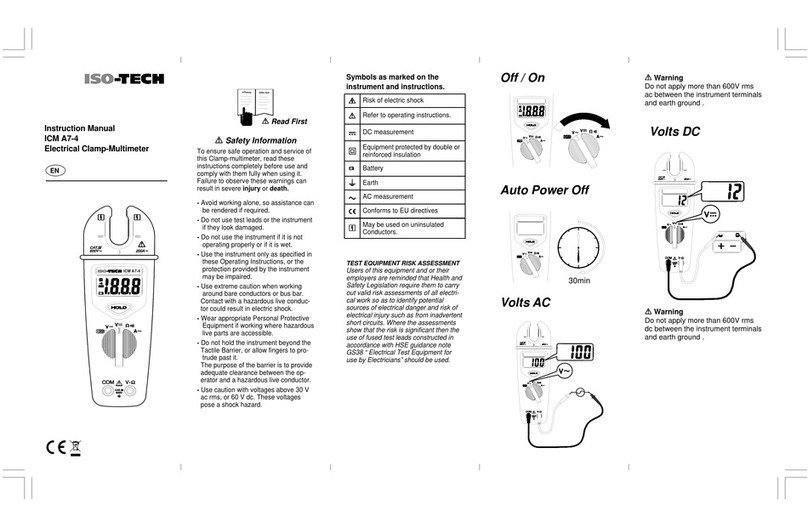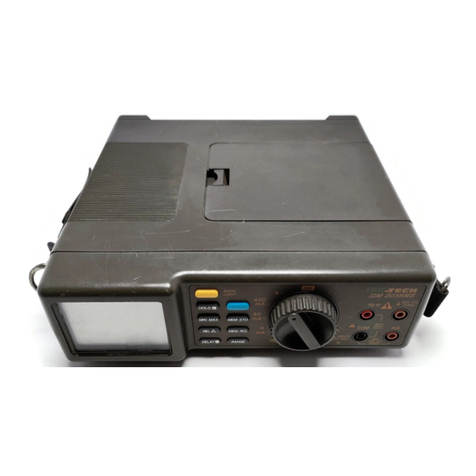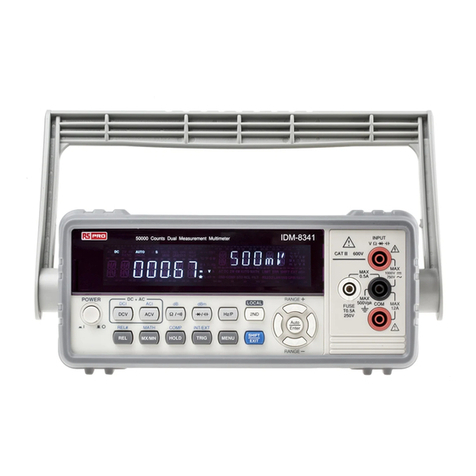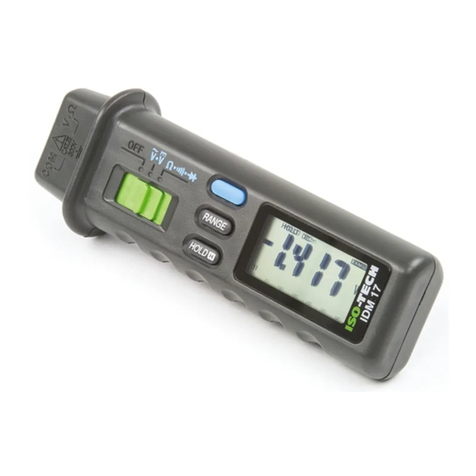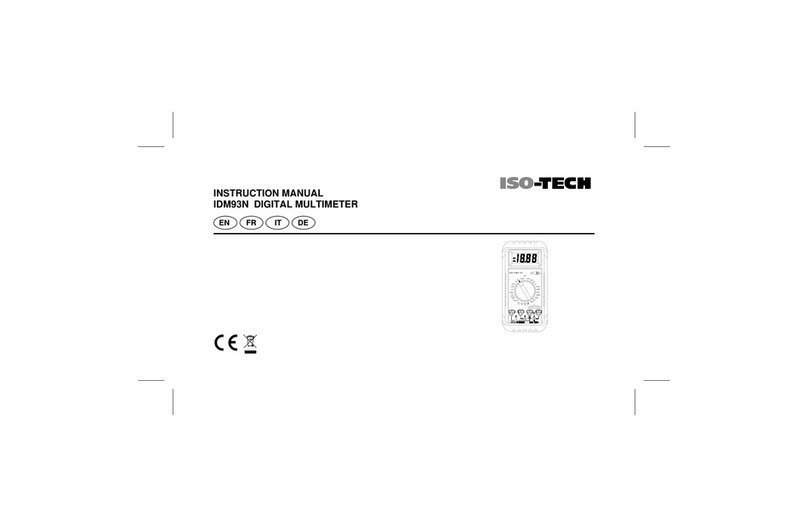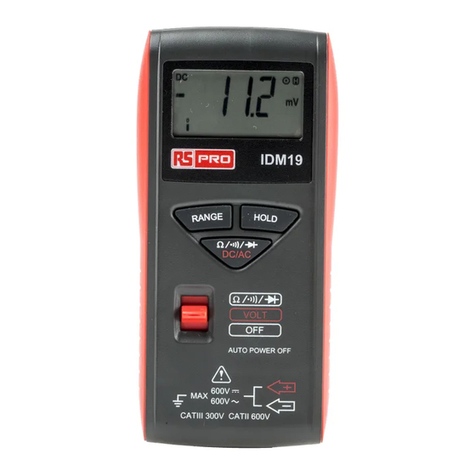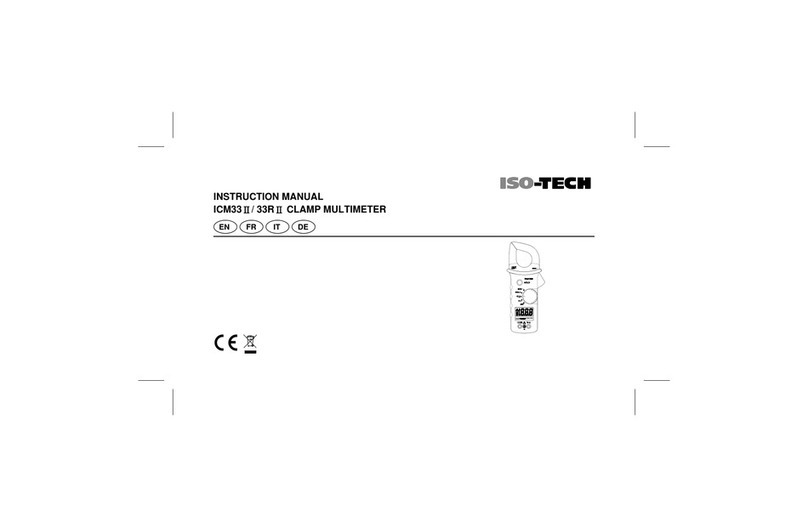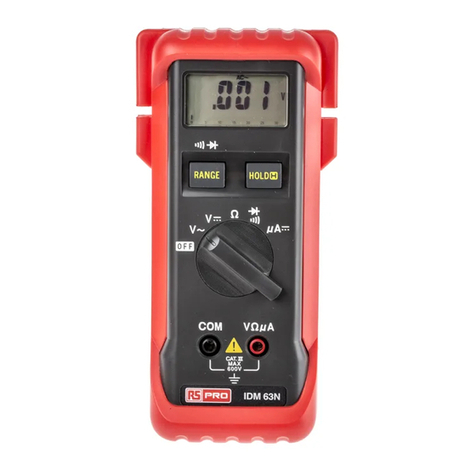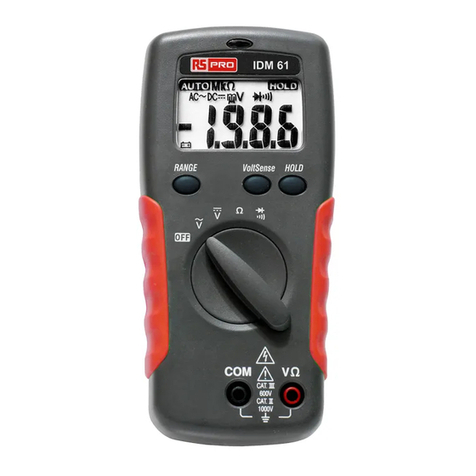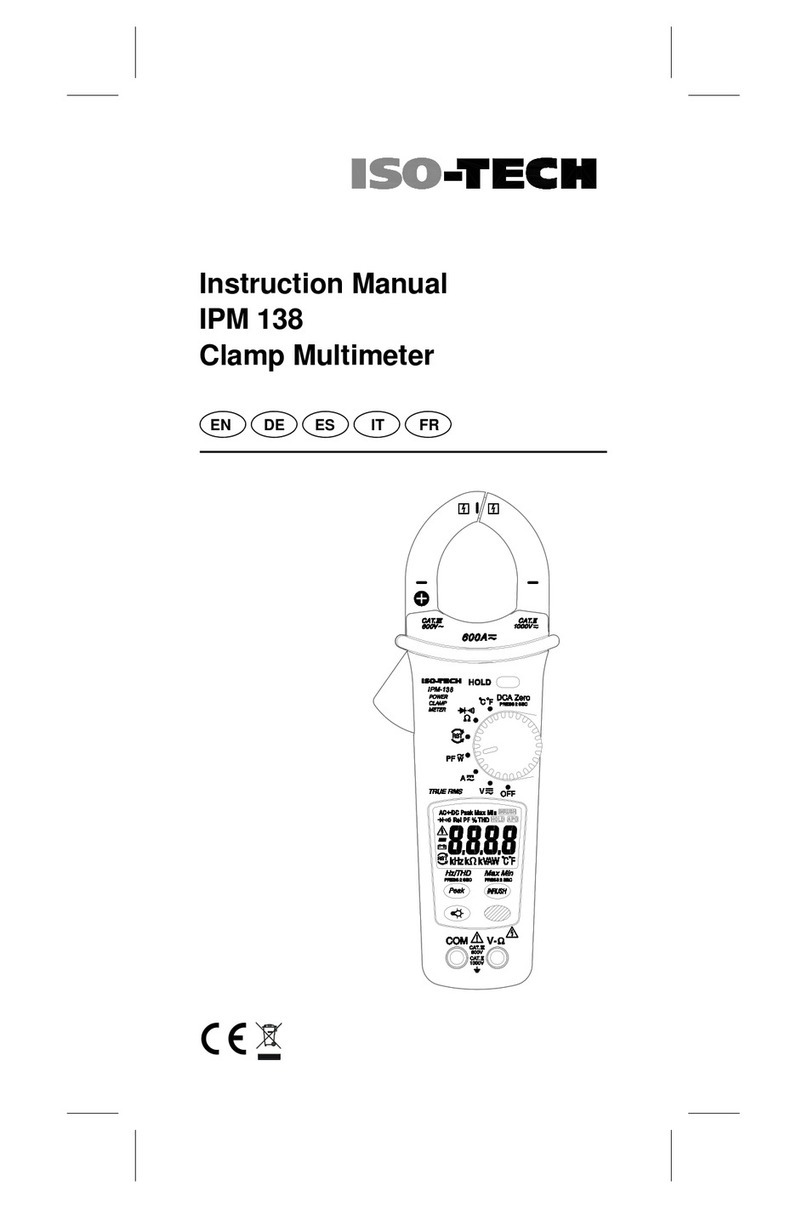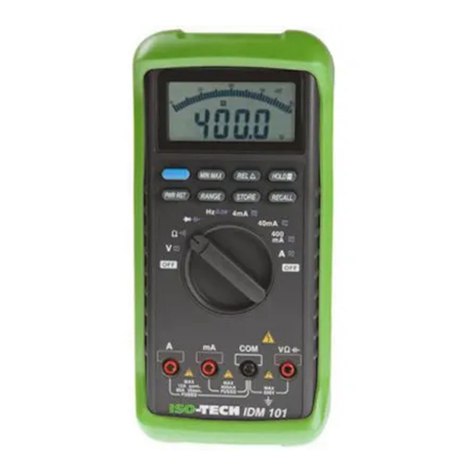1
Warning
. . . . . . . . . .
. . . . . . . . . .
. . . . . . . . . .
. . . . . . . .
Safety sheet
. . . . . . . . .
. . . . . . . . . .
. . . . . . . . . .
. . . . . . . .
. . . . . . . . .
Read First
Safety Information
Understand and follow operating instructions carefully.
Use the meter only as specified in this manual; otherwise,
the protection provided by the meter may be impaired.
WARNING
Identifies hazardous conditions and actions that could cause
BODILY HARM or DEATH.
CAUTION
Identifies conditions and actions that could DAMAGE the meter
or equipment under test.
WARNING
˙When using test leads or probes, keep your fingers behind
the finger guards.
˙Remove test lead from Meter before opening the battery
door or Meter case.
˙Use the Meter only as specified in this manual or the
protection by the Meter might be impaired.
˙Always use proper terminals, switch position, and range for
measurements.
˙Verify the Meter’s operation by measuring a known voltage.
If in doubt, have the Meter serviced.
˙Do not apply more than the rated voltage, as marked on
Meter, between terminals or between any terminal and
earth ground.
˙Only replace the blown fuse with the proper rating as
specified in this manual.
˙Use caution with voltages above 30 Vac rms, 42 Vac peak,
or 30 Vdc. These voltages pose a shock hazard.
˙To avoid false readings that can lead to electric shock and
injury, replace battery as soon as low battery indicator.
˙Disconnect circuit power and discharge all high-voltage
capacitors before testing resistance, continuity, diodes, or
capacitance.
˙Do not use Meter around explosive gas or vapor.
˙To reduce the risk of fire or electric shock do not expose this
product to rain or moisture.
˙Do not touch any circuits or parts of circuits if they may be
subject to voltages higher than 30VAC rms or 30VDC.
Warning Safety sheet
